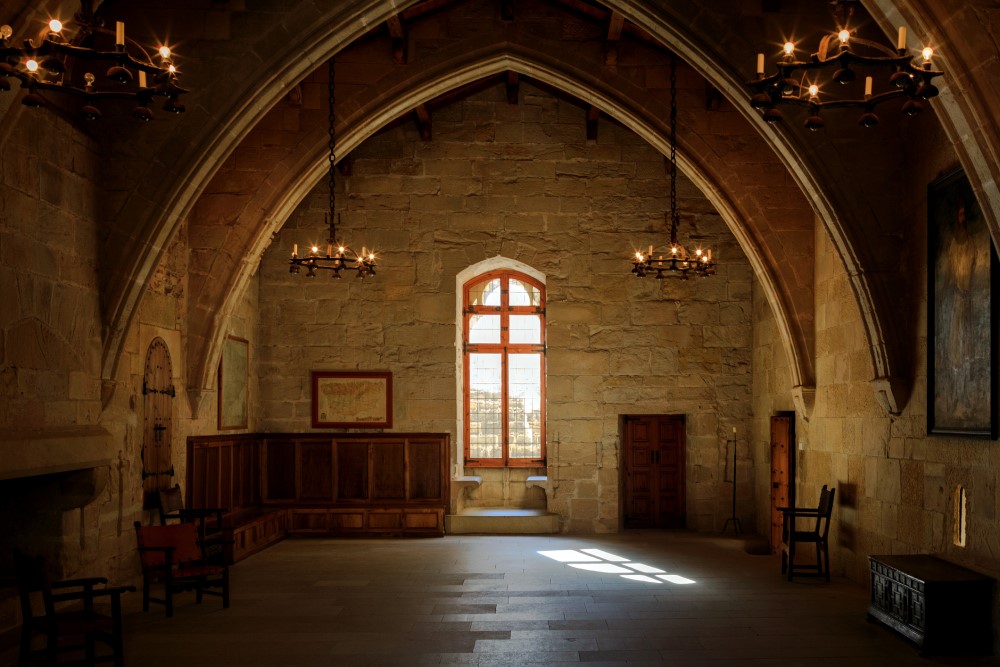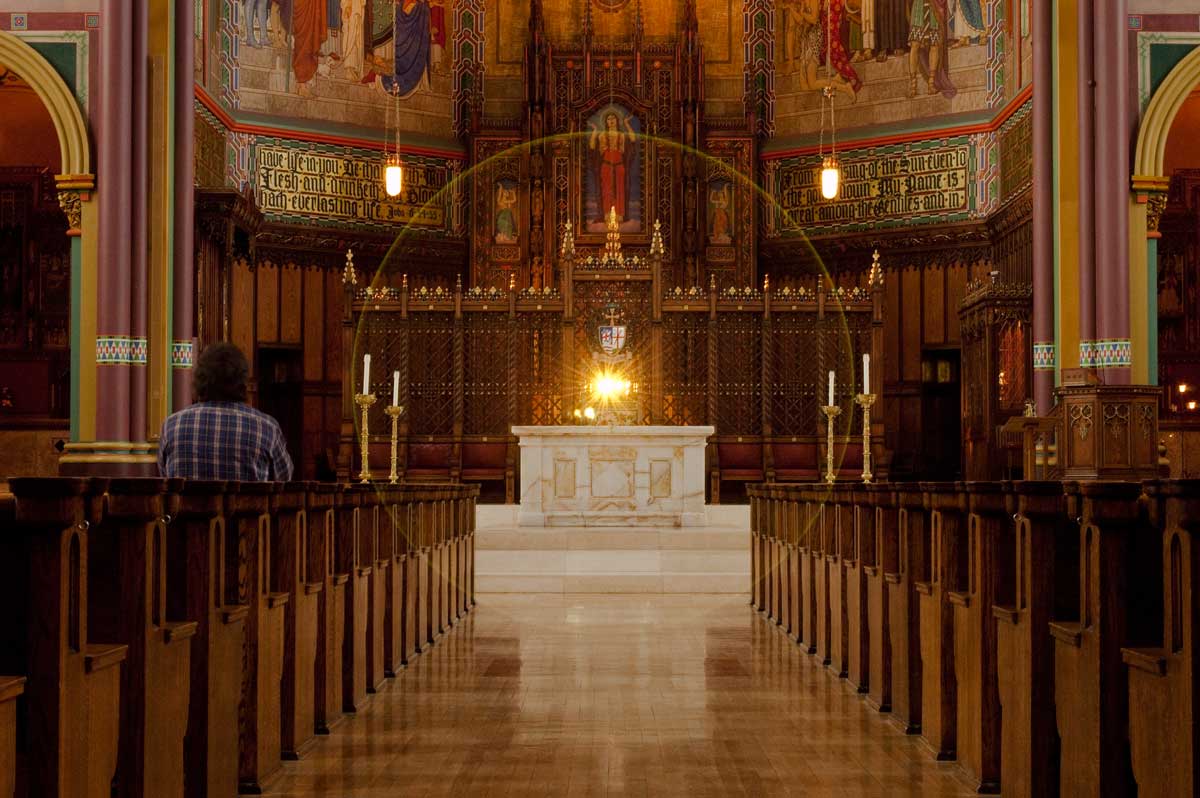Feature
A Many-Storied Monastic
A Critical Memoir of Thomas Merton at Gethsemani Abbey
In the late afternoon of December 17, 1968, Thomas Merton’s body was laid to rest at his Trappist monastery, Gethsemani Abbey, in Kentucky. During the hour that immediately preceded the funeral Mass, the bier was placed at the top of the nave in the monastery church, where—in accordance with ancient monastic custom—two monks stood and recited the Psalms for the repose of Merton’s soul.
I was one of those monks.
During the ensuing four decades and more, friends have repeatedly asked me to write down personal memories of that extraordinary man, whom I knew during the last thirteen years of his life. Although I cannot imagine adding anything new or significant to the vast material recorded in the endless stream of books and articles written about Merton since that time, I have at length determined to jot down a few recollections, whatever their worth.
This is not an introduction to Thomas Merton, of which many are already available, but a short collection of personal memories, arranged more-or-less as they come to me, along with a critical assessment or two.
I have begun them by placing myself, once again, at Merton’s bier, just before the funeral, because the images of that hour are most vivid in my mind, and it truly was my last “contact” with him.
Ironies & Paradoxes
Like everyone else associated with Merton, I was stunned by several ironies, incongruities, contradictions, and points of paradox that attended his death. Some of these, I’m afraid, may have distracted my praying of the Psalms that day.
Most unusual was the large group of visitors who journeyed to the monastery for Merton’s funeral. This truly was extraordinary. With few exceptions, we were quite unaccustomed to seeing many non-monastics at our funerals. During my years at the abbey, we buried between twenty and thirty of the brethren, I suppose, nearly all of them octogenarians, men who had long outlived their families and the friends from their earlier life. So, except for the postcard obituaries mailed to other houses of the Trappist order, the death of a monk was scarcely noticed outside his monastery. Dom James Fox, Gethsemani’s abbot during most of my time, was fond of summing up their lives as “unknown, unheralded, and unsung.”
Merton, however, was famous—perhaps the most widely read “spiritual writer” of his time and arguably the most celebrated monastic figure of the twentieth century. Consequently, all the wire services carried the news of his passing, and his obituary appeared in newspapers and journals around the world. (Newsweek—or was it Time?—ran a double obituary of Merton and Karl Barth, who died on the same day, December 10, 1968.) Consequently, quite a number of visitors were in attendance at the funeral.
Patrick Henry Reardon is pastor emeritus of All Saints Antiochian Orthodox Church in Chicago, Illinois, and the author of numerous books, including, most recently, Out of Step with God: Orthodox Christian Reflections on the Book of Numbers (Ancient Faith Publishing, 2019).
subscription options
Order
Print/Online Subscription

Get six issues (one year) of Touchstone PLUS full online access including pdf downloads for only $39.95. That's only $3.34 per month!
Order
Online Only
Subscription

Get a one-year full-access subscription to the Touchstone online archives for only $19.95. That's only $1.66 per month!
bulk subscriptions
Order Touchstone subscriptions in bulk and save $10 per sub! Each subscription includes 6 issues of Touchstone plus full online access to touchstonemag.com—including archives, videos, and pdf downloads of recent issues for only $29.95 each! Great for churches or study groups.
Transactions will be processed on a secure server.
more on Catholic from the online archives

35.4—Jul/Aug 2022
The Death Rattle of a Tradition
Contemporary Catholic Thinking on the Question of War by Andrew Latham
more from the online archives
calling all readers
Please Donate
"There are magazines worth reading but few worth saving . . . Touchstone is just such a magazine."
—Alice von Hildebrand
"Here we do not concede one square millimeter of territory to falsehood, folly, contemporary sentimentality, or fashion. We speak the truth, and let God be our judge. . . . Touchstone is the one committedly Christian conservative journal."
—Anthony Esolen, Touchstone senior editor











